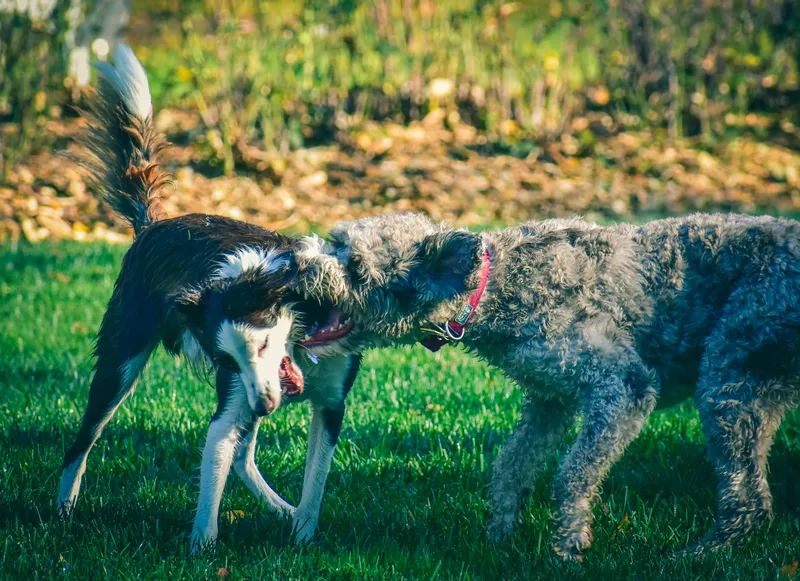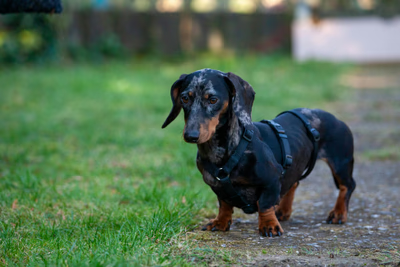Aggression in Dogs: Causes and Solutions
Why Has My Dog Become Aggressive Toward Other Dogs?
Canine aggression worries many owners. If you’ve been asking, “Why has my dog become aggressive toward other dogs?” you’re in the right place. In this article, we explore the reasons behind this behavior, how to spot warning signs, and what steps you can take to correct it.

Understanding Canine Aggression
What Is Aggression in Dogs?
Aggression in dogs is behavior aimed at intimidating or attacking other dogs, people, or objects. It can range from a simple growl to a physical attack. Remember, aggression isn’t always negative; sometimes it’s a defense mechanism.
Types of Aggression in Dogs
There are several common types of canine aggression:
- Territorial aggression: Occurs when a dog feels its space is being invaded.
- Fear aggression: A dog reacts aggressively because it feels threatened.
- Dominance aggression: Related to establishing social rank.
- Maternal aggression: Happens when a mother protects her puppies.
Common Causes of Aggression in Dogs
Identifying the cause of aggression is essential to addressing the problem. Here are some frequent reasons:
Stress and Anxiety
Dogs are sensitive and may develop aggression due to stress or anxiety. Changes in their environment, new family members, or uncomfortable situations can trigger aggressive behavior.
Lack of Socialization
Socialization is crucial. Dogs that haven’t been exposed to other dogs or social situations from a young age may show aggression when encountering other canines.
Health Problems
Sometimes aggression signals underlying health issues. Physical pain or discomfort can make a dog react aggressively, so rule out medical problems before assuming it’s purely behavioral.
Dominance and Social Hierarchy
Dogs instinctively establish hierarchies within their group. A dog that feels it must assert itself as “leader” may become aggressive toward others it perceives as a threat to its status.
Warning Signs of an Aggressive Dog
Recognizing warning signs before a dog acts aggressively is vital. Look for these indicators:
Canine Body Language
Watch your dog’s body language. Signals include:
- Ears pinned back
- Rigid tail
- Growling or barking
- Intense staring
Pre-Aggression Behaviors
Dogs often display behaviors that precede an attack:
- Body tension increases
- Quick forward movements
- Changes in breathing
How to Correct Aggression in Dogs
If your dog shows signs of aggression, take appropriate steps to correct it. Here are effective strategies:
Establish Leadership and Hierarchy
Dogs need a clear leader. Positively reinforce desired behaviors and maintain a routine to establish yourself as that leader.
Behavior-Modification Techniques
Several techniques can reduce aggressive behavior:
- Desensitization: Gradually expose your dog to other dogs at a safe distance.
- Positive conditioning: Reward calm, relaxed behavior.
- Command training: Teaching basics like “sit” or “stay” helps control tense situations.
Importance of Controlled Socialization
Socialization is powerful for preventing aggression. Arrange controlled meetings with other dogs and ensure positive experiences so your dog learns proper interactions.
When to Seek Professional Help
If aggression persists despite your efforts, seek professional assistance.
Consult a Veterinarian
A vet can rule out health problems contributing to aggression and advise you on next steps.
Work with a Dog Trainer or Behaviorist
A specialized trainer or behaviorist can provide tailored strategies for complex aggressive behavior—their expertise is invaluable.
Practical Tips to Prevent Aggression
Prevention is key. Here are practical tips to avoid aggressive behavior:
Exercise and Mental Stimulation
A tired dog is a happy dog. Provide ample physical and mental exercise to prevent frustration that can lead to aggression.
Proper Management During Walks
Use a suitable harness and maintain control during walks. Avoid situations that may trigger encounters with other dogs if you’re unsure of your pet’s reaction.
Use of Muzzles and Leashes
In situations where aggression may be a problem, consider a muzzle and a short leash. This protects others and gives you greater control.
Conclusion
Understanding why your dog has become aggressive toward other dogs is essential to addressing and correcting the behavior. By identifying the causes, recognizing warning signs, and implementing effective strategies, you can help your dog become more sociable and less aggressive. When in doubt, seek professional help. Patience and dedication are key—your efforts will pay off.


